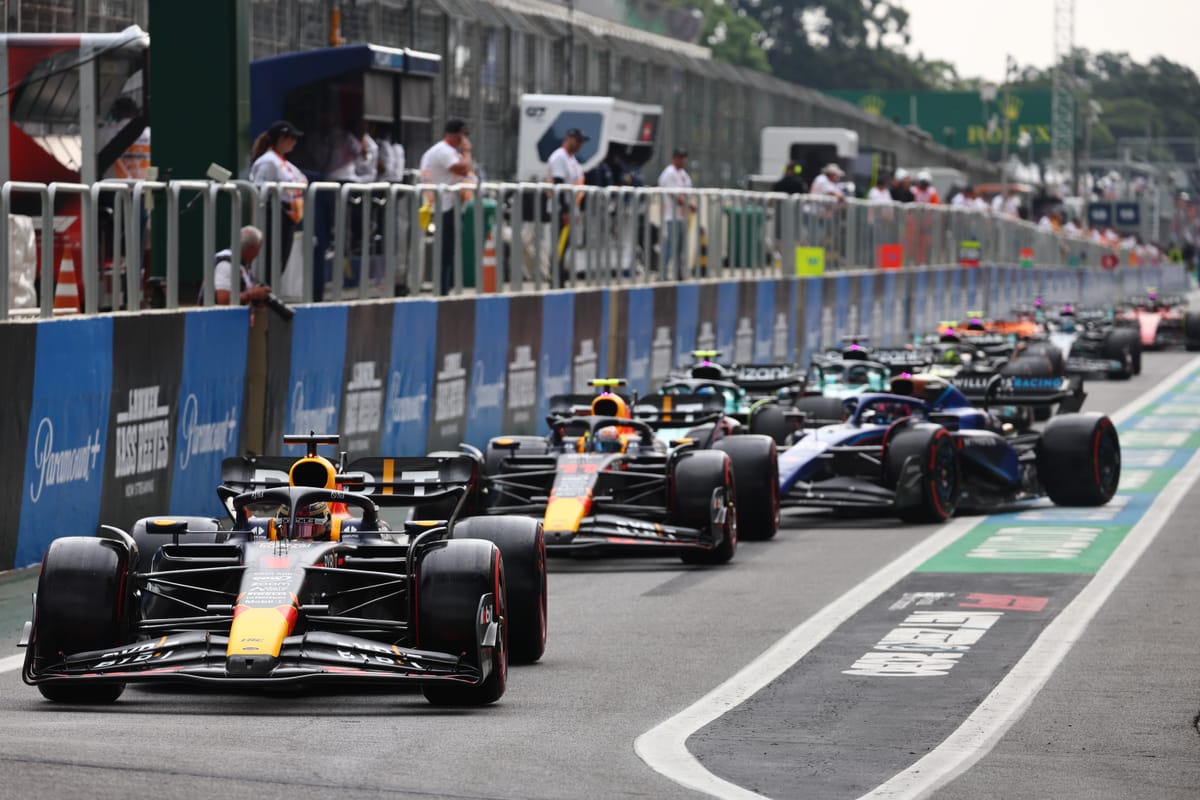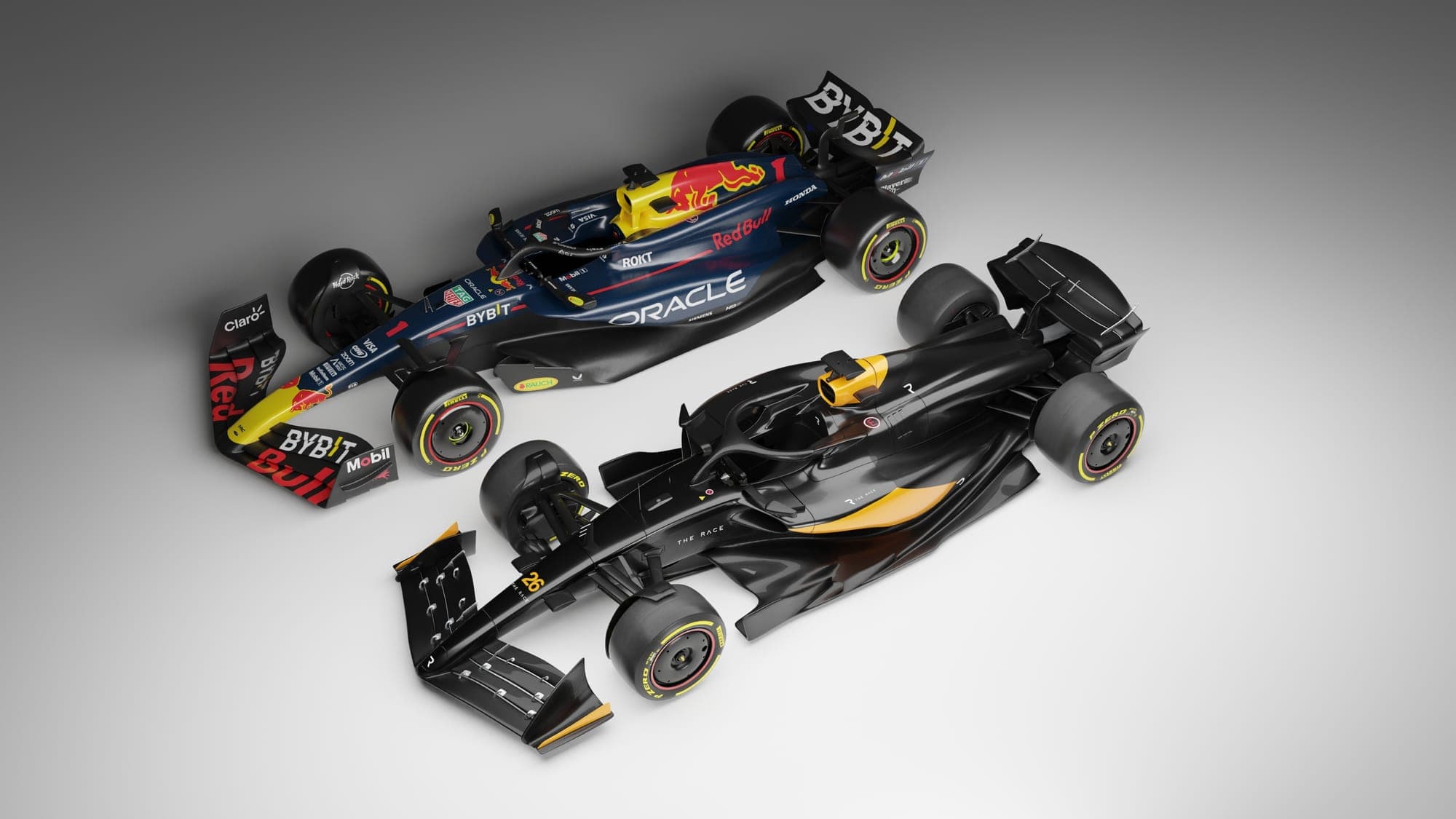

The next-generation Formula 1 car for 2026 is getting closer to being finalised and there is a new overtaking aid from the engine that will be part of it.
There is a June 2024 deadline to get a first draft of the chassis technical regulations approved and published, to go along with the engine rules that have existed for a couple of years now.
F1 will continue with V6 turbo-hybrid engines in 2026 but that undersells the size of the technical challenge faced by the six registered manufacturers: Red Bull Powertrains, Mercedes, Ferrari, Honda, Renault and Audi.
The single most significant change is the removal of the MGU-H, which converts wasted heat to electrical energy and is effectively a sophisticated anti-lag system for the turbocharger but was deemed too complex with too little road relevance.
It also conferred a big advantage to the existing engine suppliers at a time when F1 was keen to get new manufacturers onto the grid – something that has clearly been achieved with Audi’s project, Ford’s collaboration with Red Bull, and Honda’s U-turn.
The loss of the MGU-H is being compensated for by increasing power from the MGU-K to 350kW, or around 469bhp, which will put the split between internal combustion engine and electrical power closer to 50/50. This has been established for a long time and is unchanged despite Red Bull’s protestations last year.
That said, those regulations are still being fettled. The most recent versions include an eye-catching new ‘manual override’ function, which in oversimplified terms will give drivers more power at high speeds to help with overtaking.
WHY 'MANUAL OVERRIDE' IS NEEDED
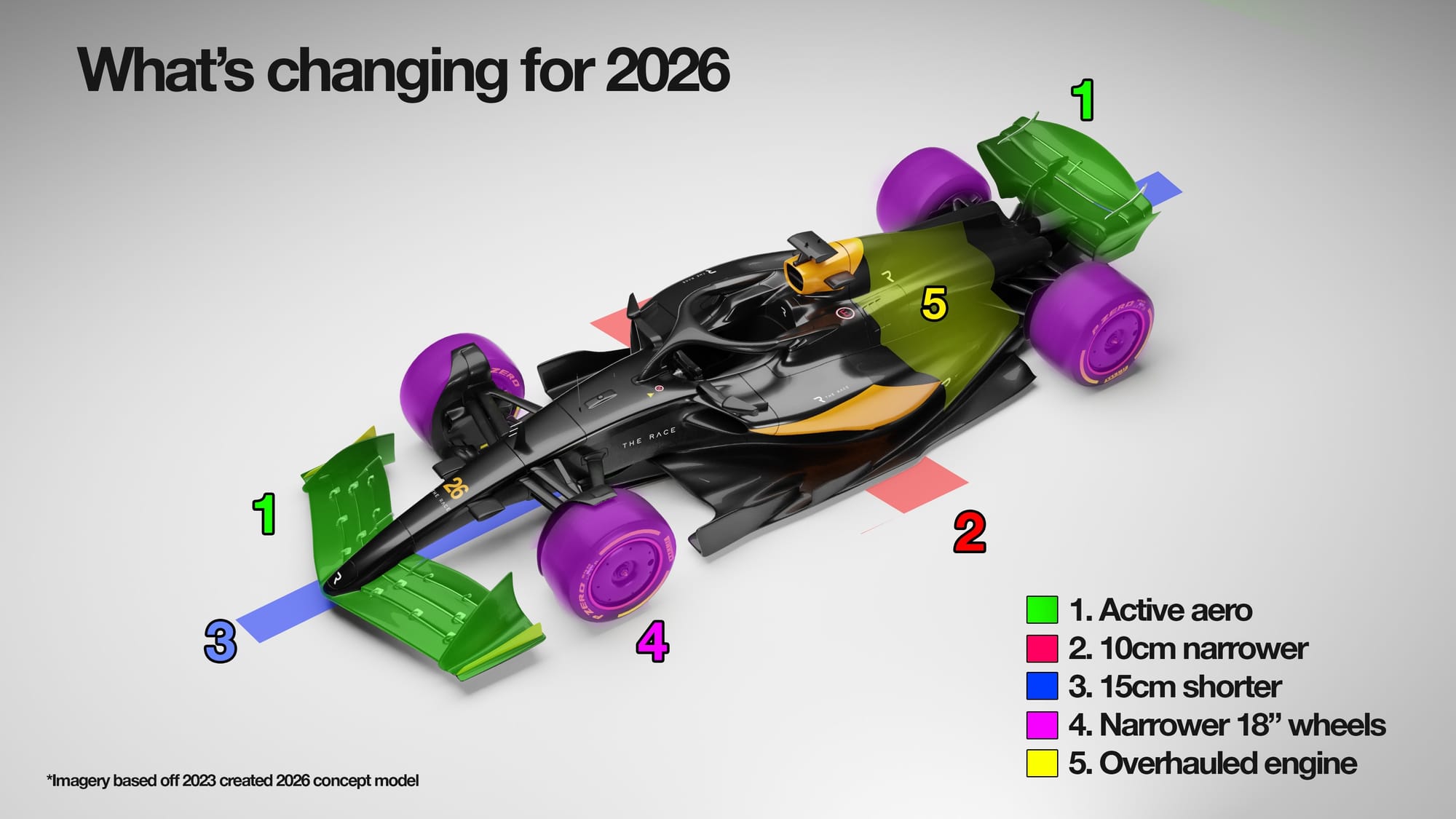
While the FIA claims to be happy with the wake characteristics it is observing from the 2026 cars in simulations, it accepts that some kind of overtaking assist is necessary.
To that end, the drag reduction system is likely to remain, in combination with other active aerodynamics to change the front and rear wing settings on the straight, but this is not considered enough because of the characteristics the 2026 cars will have.
The worry is that by prioritising more efficient cars on the straight they will be so low drag, and running at such high speeds on the straights, that overtaking will be even harder.
The FIA believes that the drag characteristics of the 2026 cars will still generate a decent tow effect, but the DRS effect will be reduced compared to what it is now.
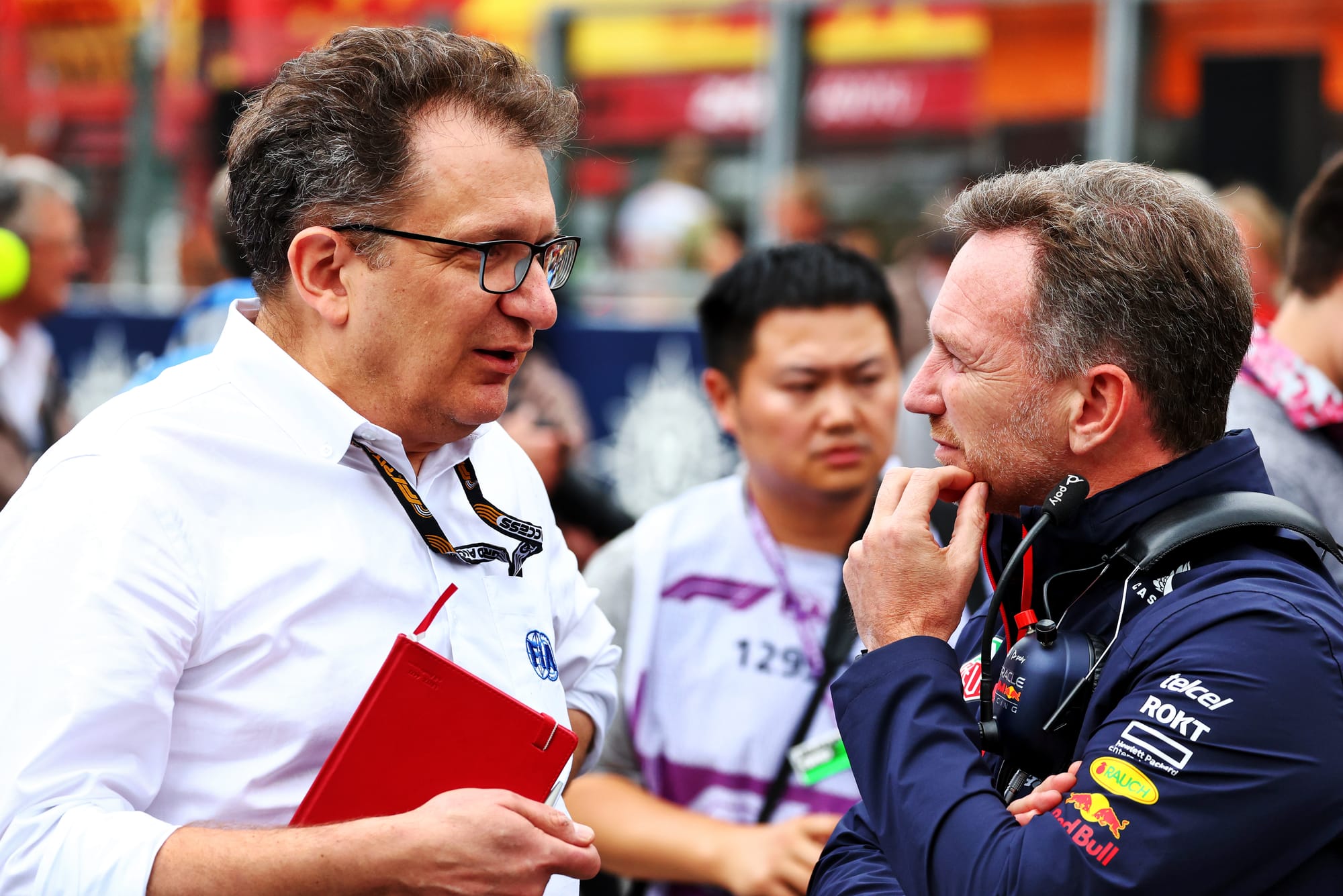
In addition, how much of the MGU-K’s 350kW power can be deployed will be carefully managed to limit top speeds. This is because the FIA doesn’t want super low drag cars to be hitting 400 kilometres per hour on the straights as that would lead to knock-on effects like extra safety considerations and having to re-evaluate run-off areas and barrier arrangements.
“There will be, in all likelihood, some form of the DRS,” FIA single-seater director Nikolas Tombazis told The Race.
“But we need to have between either aerodynamics or engine, some form of assist for overtaking.
“As much as we would rather have none of that and have cars just able to be nose to tail and attack each other and so on - and that is the ultimate aim – we also don't want to have to be in a situation where we find they can’t overtake and cars will basically never be able to attack each other.
“We definitely can't risk to get in that position.”
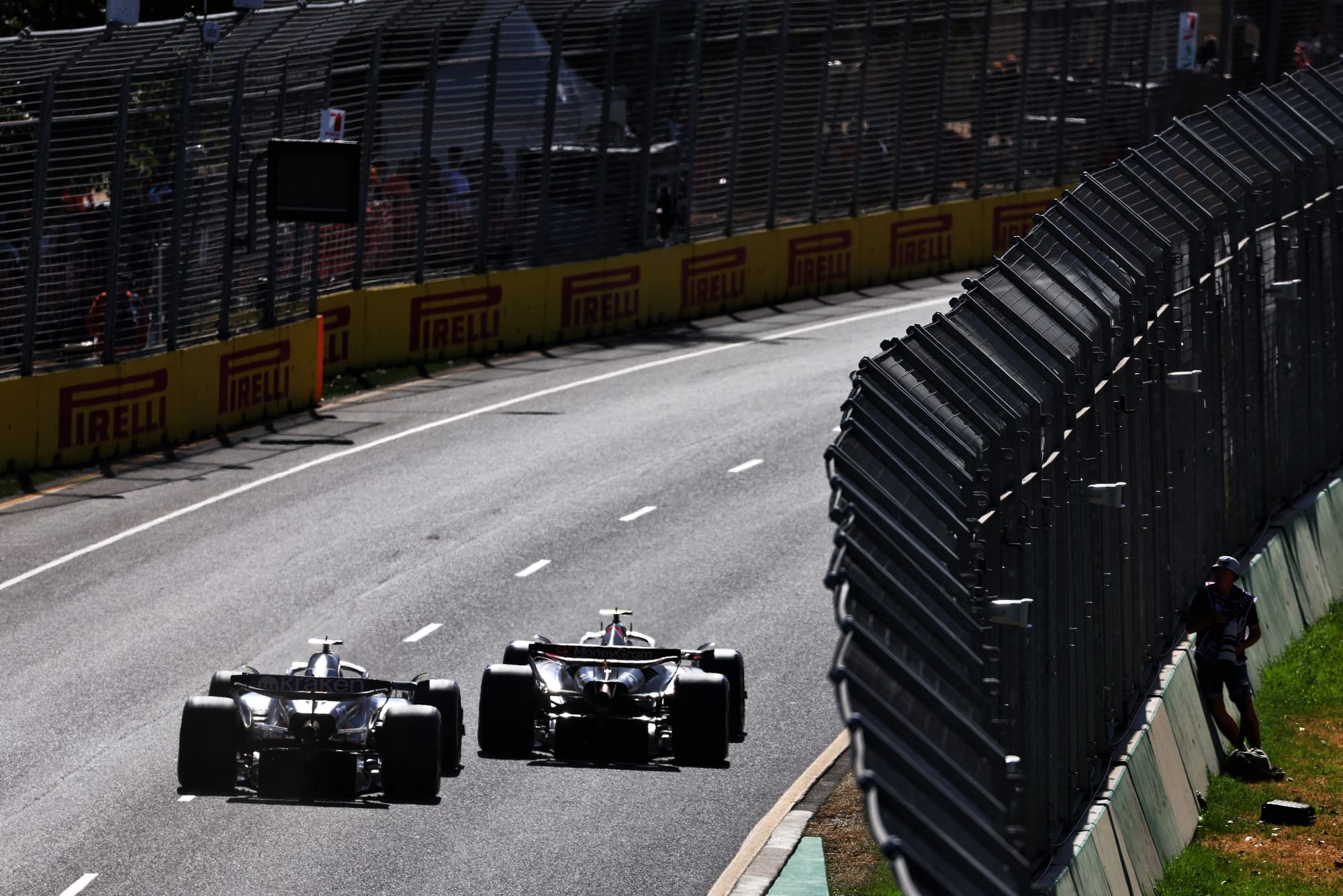
Once the car hits 340km/h, the MGU-K deployment will taper off. This has been calculated together with the car’s simulated drag profile. The low-drag effect should be more powerful at high speed, so the faster the cars go, the less resistance they encounter, which offsets the reduction in electrical power.
This should prevent any dramatic decelerations on straights and give the cars a similar velocity profile to what they have now. But it could lead to a chasing car stagnating in pursuit of another.
With this in mind, the 2026 cars will be supported by a ‘manual override’ system that the drivers can activate to access more electrical power at the very upper end of the speed range.
When the manual override is activated, the MGU-K will keep deploying maximum 350kW power past 340km/h up to 355km/h.
What hasn’t been defined is how long the override function will last – whether there will be a certain number of seconds even if the car remains in the 340-355km/h speed range for longer - nor is it known how many times a driver can use it per lap or per race.
This will all be established in the sporting regulations once the final chassis rules are set. The priority for the FIA was to build the provision into the engine rules now.
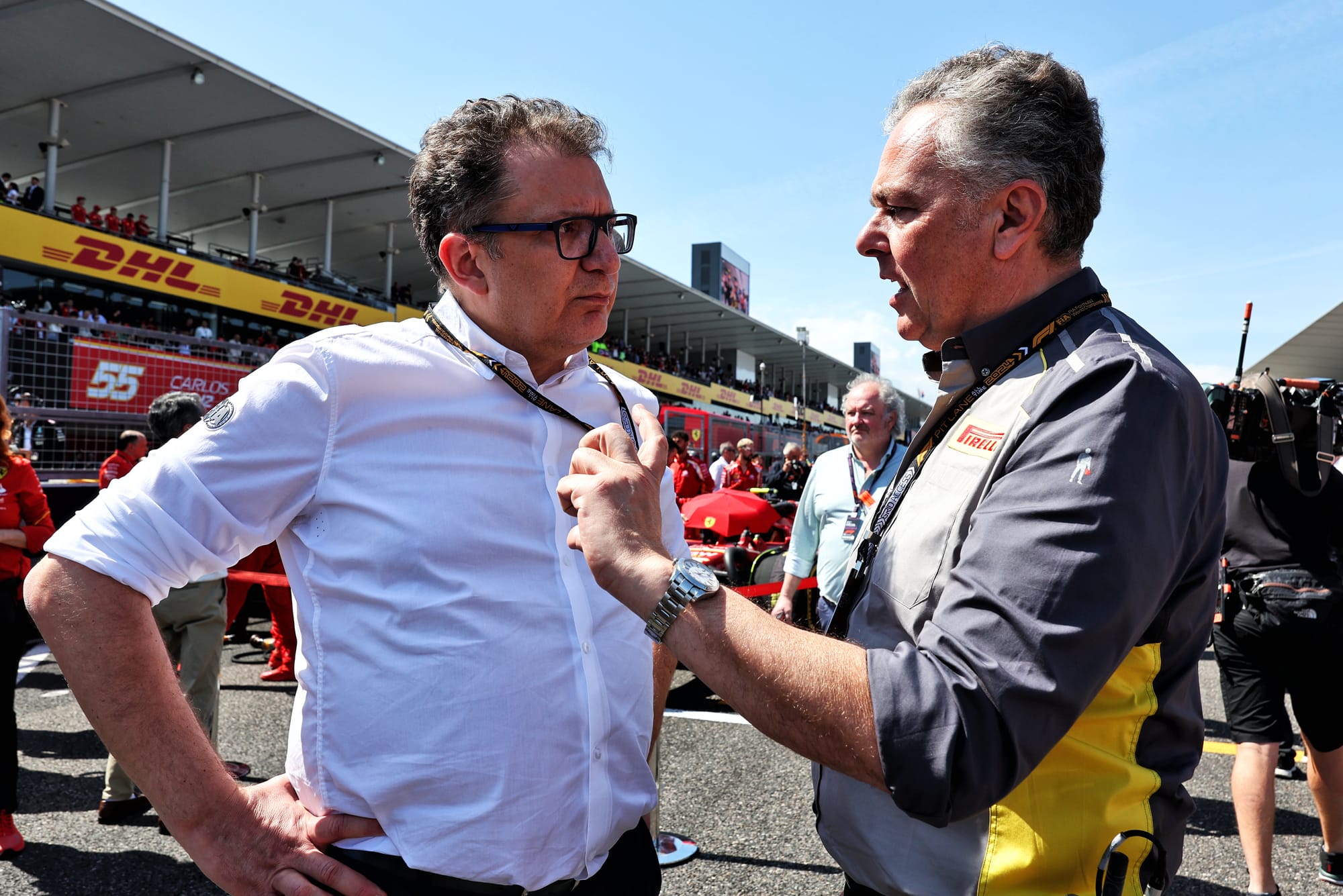
“We're waiting to finalise a complete car package before we determine that,” said Tombazis.
“But ultimately, we are very acutely aware that on the one hand, you do want to have cars racing closely and attacking each other, you do want to have cars overtaking each other, but you also don't want to make overtaking cheap or easy.
“It needs to be always in that level where it remains a challenge and remains something that gives you a degree of excitement when you see it and not a banal sort of thing that happens all the time.”
PRESERVING 'TRADITIONAL' DRIVER SKILL
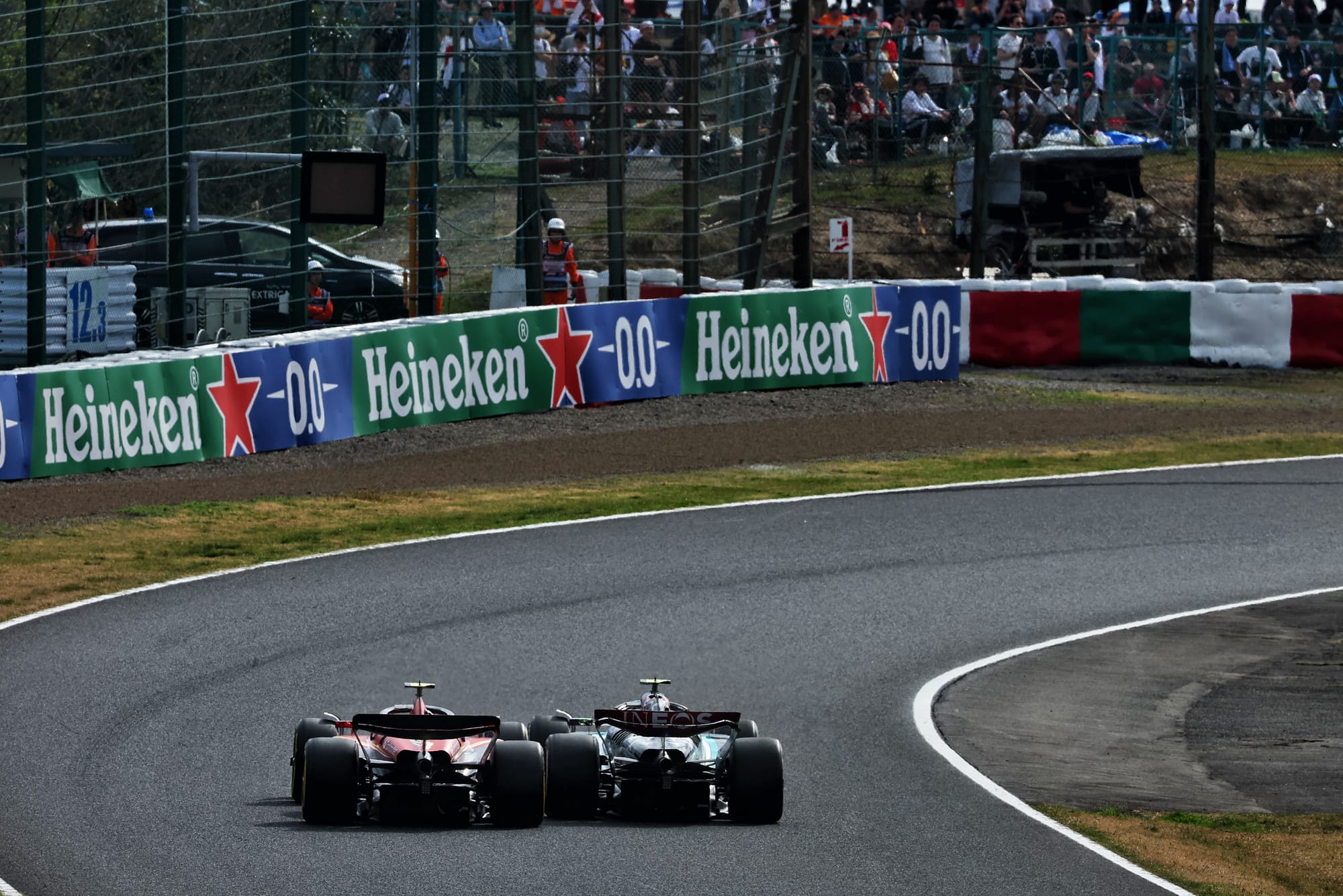
The FIA believes the combination of active aerodynamics and the manual override to be the best solution in terms of marrying up the car and engine characteristics and preserving the traditional skills of the driver to avoid F1 becoming a big, automated, energy-manipulation exercise as the hybrid era evolves.
There had also been consideration given to whether communication could or should be limited to ensure the drivers are still in control but this has been dismissed as the knock-on effects would not be worth it.
“First of all, there's a lot of safety-related matters or other matters, such as you're impeding another car, you need to retire the car, or ‘be careful there’s an accident’,” Tombazis said.
“So, we can't realistically or sensibly stop this communication.
“The moment you allow some communication, then you can't be into deciphering any coding that may take place.
“What we're trying to do with the rules is to make sure that the main battle stays within a relatively narrow remit, that it still exercises the core skills of the driver.
“The core skill of a driver should not be and should not become who's the best strategist with their energy or something like that.
“It should still be about braking late, reaching the grip limit, hitting the apex, and so on and so forth – the traditional skills of the driver, those we want to preserve.
“Clearly, the more electrical power there is in a modern car, the more strategies come in play. But we've been trying to make sure that that doesn't become the dominating factor.
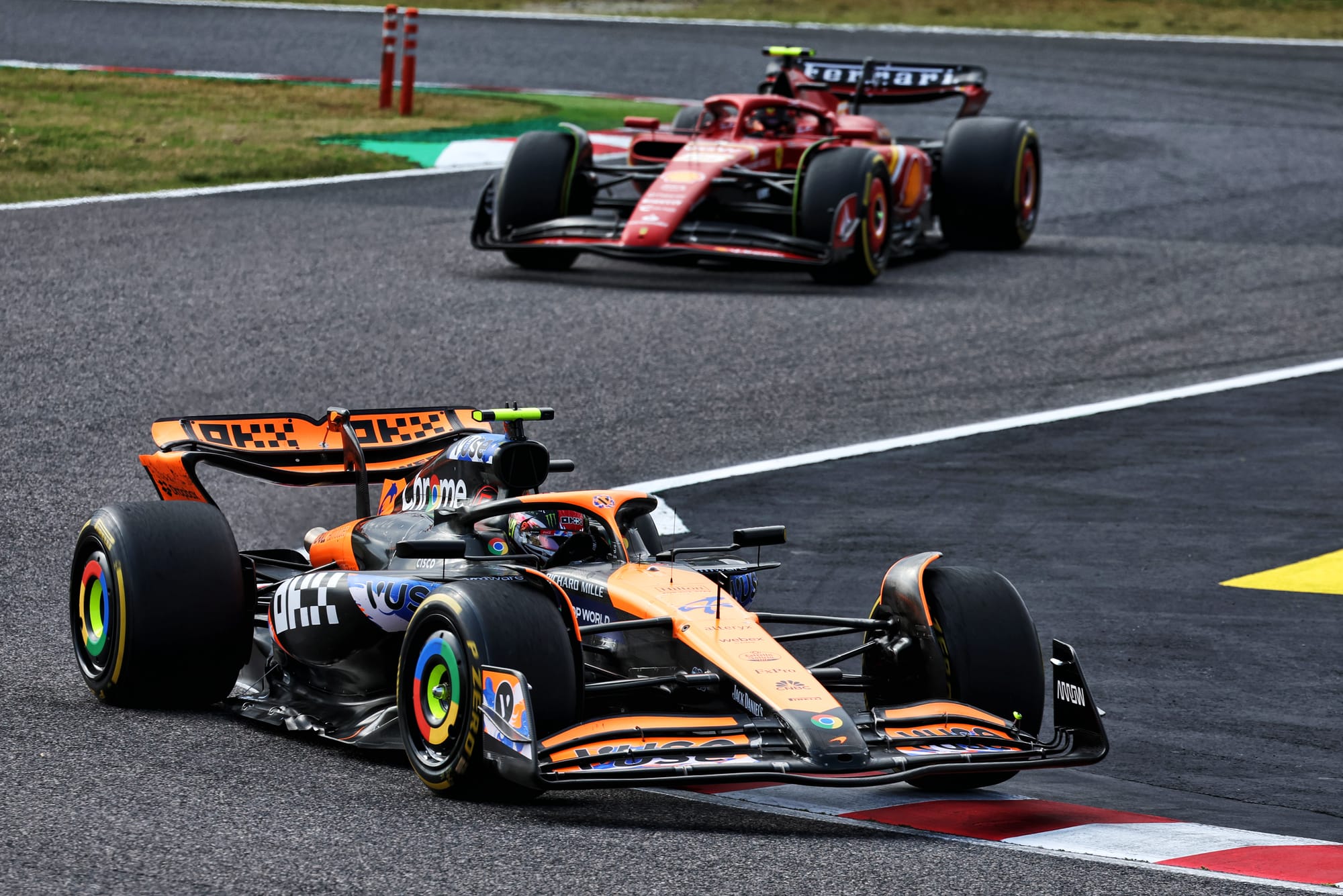
“We don't want Formula 1 to be all about how much energy you've got left, and so on.
“We want it to always be drivers pushing, following each other, outbraking each other and going fast around corners, that's what we want to remain as the core basis of the sport.”
That is also why Tombazis feels it is slightly simplistic to call the override function a “push to pass” function as he doesn’t like the implication it would lead to an easy overtake.
The intention is to help the car behind to keep gaining on the car in front even at the point where the tow and the DRS are minimally effective - and thus help drivers get close enough to attack into braking zones.
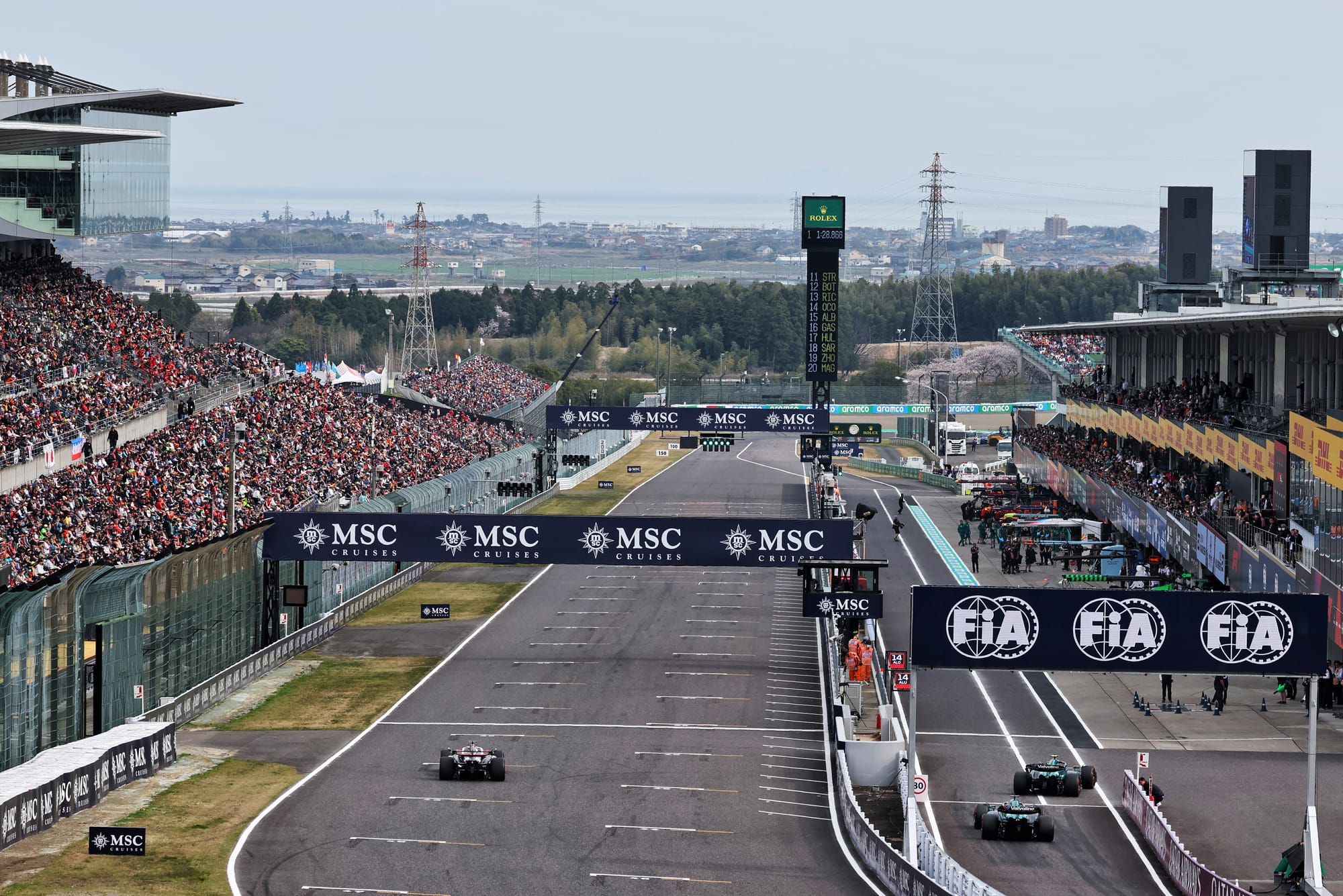
This is basically what the DRS is meant to achieve although it should be noted that it is already too powerful in some places.
“Sometimes we get it wrong,” Tombazis admitted. “And sometimes on some circuits, we have drivers driving past each other.
“But this is not the objective. And it's also never going to be the objective in the future regulations.
“What we want is ideally, drivers to be able to fight into corners and to outbrake each other and to have an exciting battle.
“This engine regulation is just there to give us to make sure we have enough tools at our disposal, once we finalise the complete car, to see that these battles happen.
“We'd never want to be like in some other series where you just push the button and you go by like you’re on the motorway.”
